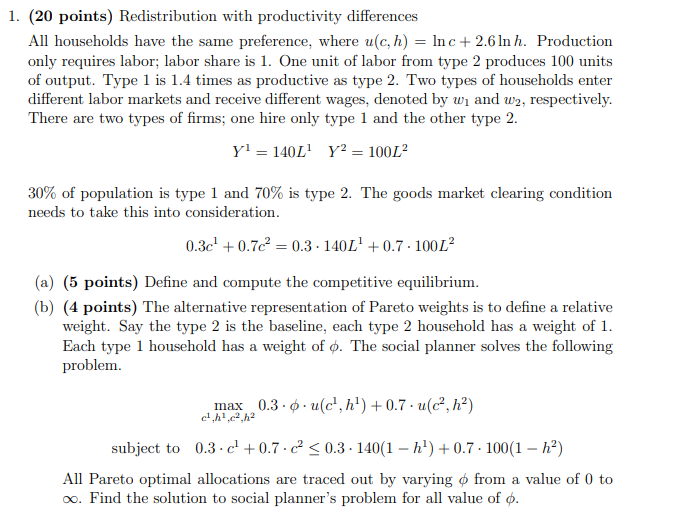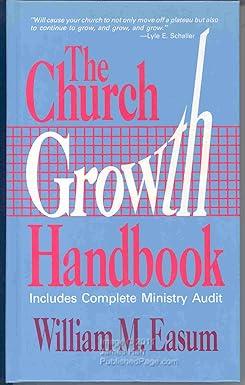Please solve question B and NOT question A.

( 20 points) Redistribution with productivity differences All households have the same preference, where u(c,h)=lnc+2.6lnh. Production only requires labor; labor share is 1 . One unit of labor from type 2 produces 100 units of output. Type 1 is 1.4 times as productive as type 2 . Two types of households enter different labor markets and receive different wages, denoted by w1 and w2, respectively. There are two types of firms; one hire only type 1 and the other type 2 . Y1=140L1Y2=100L2 30% of population is type 1 and 70% is type 2. The goods market clearing condition needs to take this into consideration. 0.3c1+0.7c2=0.3140L1+0.7100L2 (a) (5 points) Define and compute the competitive equilibrium. (b) (4 points) The alternative representation of Pareto weights is to define a relative weight. Say the type 2 is the baseline, each type 2 household has a weight of 1 . Each type 1 household has a weight of . The social planner solves the following problem. maxc1,h1,c2,h20.3u(c1,h1)+0.7u(c2,h2)subjectto0.3c1+0.7c20.3140(1h1)+0.7100(1h2) All Pareto optimal allocations are traced out by varying from a value of 0 to . Find the solution to social planner's problem for all value of . ( 20 points) Redistribution with productivity differences All households have the same preference, where u(c,h)=lnc+2.6lnh. Production only requires labor; labor share is 1 . One unit of labor from type 2 produces 100 units of output. Type 1 is 1.4 times as productive as type 2 . Two types of households enter different labor markets and receive different wages, denoted by w1 and w2, respectively. There are two types of firms; one hire only type 1 and the other type 2 . Y1=140L1Y2=100L2 30% of population is type 1 and 70% is type 2. The goods market clearing condition needs to take this into consideration. 0.3c1+0.7c2=0.3140L1+0.7100L2 (a) (5 points) Define and compute the competitive equilibrium. (b) (4 points) The alternative representation of Pareto weights is to define a relative weight. Say the type 2 is the baseline, each type 2 household has a weight of 1 . Each type 1 household has a weight of . The social planner solves the following problem. maxc1,h1,c2,h20.3u(c1,h1)+0.7u(c2,h2)subjectto0.3c1+0.7c20.3140(1h1)+0.7100(1h2) All Pareto optimal allocations are traced out by varying from a value of 0 to . Find the solution to social planner's problem for all value of







